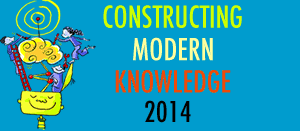
Join the fine folks at TakingITGlobal for some exciting professional development on global education and project-based learning. Starting this month, TIGed is offering two accredited e-courses in technology-enabled global education for teachers around the world!
TakingITGlobal is a youth community site with over 140,000 members worldwide. The site tools allow members to create or join global projects, with community and sharing features. To support teachers, they offer TIGed, a community with resources and shared space to plan or learn more about how to support global education.
Starting September 14, 2011: TIGed is offering two e-courses: “Introduction to Global Education” and “Introduction to Global Project-Based Learning.” The first course familiarizes participants with the driving pedagogies behind global education and guides them in exploring practical strategies for globalizing their curricula. The second course builds on the first by exploring how global education can best merge with project-based learning strategies, including how to use online tools to effectively collaborate with international partners. You can learn more about what is covered in each course by visiting the TakingITGlobal Professional Development homepage.
The first e-course starts September 14th, so don’t delay! Register today to secure your spot by visiting the TIGed Professional Development site.
Sounds fun! Don’t miss out -
Sylvia
